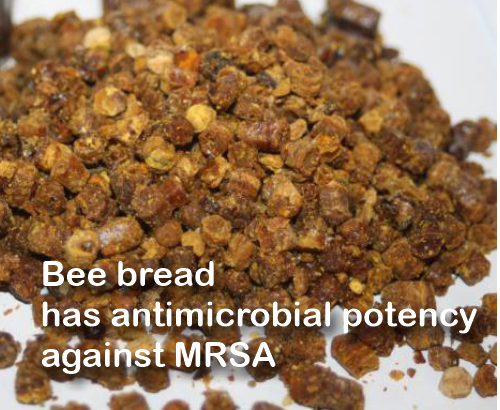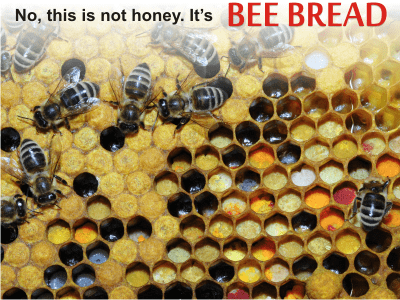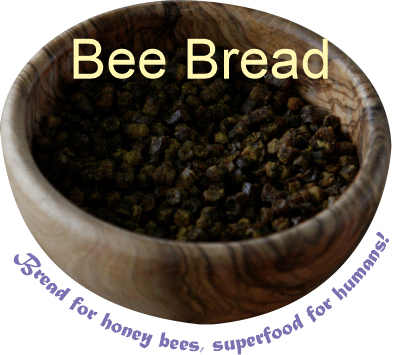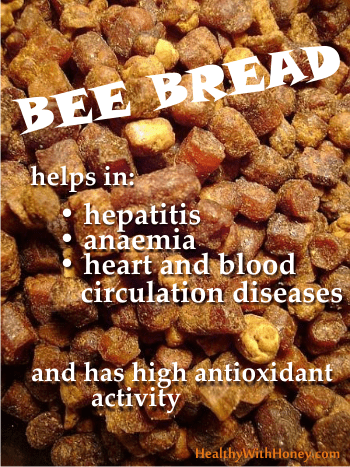Bee bread has powerful antimicrobial effect against Staphylococcus aureus, and even MRSA. Eat it!
Diversity is the first rule of a healthy diet. The second is moderation.
Introduce new products into your diet, preferably healthy ones, and enjoy their side effects: healing and a good mood. It’s the case of bee bread.
In order to feed their larvae and young bees, honey bees collect pollen from flowers. (Pollen is the flowers’ male reproductive cell). They mix it with their saliva and turn it into bee pollen. This is considered a healthy and functional food, containing all the essential amino-acids needed by bees and human bodies alike. It is a rich source of fatty acids, vitamins and microelements.
The healthy therapeutic properties of bee pollen range from antimicrobial, antioxidant, anti-radiation, anti-inflammatory, anti-tumor, hepatoprotective to chemopreventive and chemoprotective.
In order to protect bee pollen from microbial spoilage, bees use it as raw material to produce bee bread. Bee bread is stored in the cells of the honeycomb through the winter, and in spring it is used as food for new populations of bee larvae.
How is bee bread produced?
The production process is not complicated at all: bee workers collect pollen from plants, mix it with secretion from their saliva, place it in specific baskets placed on their tibia of their hind legs and thus transport it to the hive. Here they place the pollen loads in the honeycomb cells and cover it with a layer of honey and seal the cell with wax.
In the anaerobic conditions from within the cell, bee pollen undergoes fermentation and biochemical changes that also constitute a method of preservation for the final product. Scientists explain that certain enzymes from bees’ glands are responsible for the biotransformation processes that take place. For example, amylases are responsible for starch hydrolysis, and bacteria that are present in bees’ saliva and on the surfaces of pollen loads, mostly lactic acid bacteria, but also bacteria of the Pseudomonas genus and yeast of the Saccharomyces genus, are of main importance for this process.
The development of the population of lactic acid bacteria, hydrolysis of triacylglycerols and production of lactic acid, and probably other metabolites of antimicrobial activity (e.g., bacteriocins), lead to the preservation of bee bread. Additions of honey and polyphenols that are present in the raw material enhance the antimicrobial potential of BB and allow for long-term storage of this product in the hive.
Has bee bread antimicrobial effect on humans?
Yes, it has. But do not think of bee bread as of a pill. Bee bread is different, according to its geographical source. Studies have been done on multiple types of bee bread, produced from different types of flower pollen, and the results were different.
In the 2021 study “Bee Bread Exhibits Higher Antimicrobial Potential Compared to Bee Pollen” Karolina Pełka and colleagues demonstrated the following:
The study covered 30 samples of bee pollen and 19 samples of bee bread. The products were harvested between 1 May and 15 September of 2019 in apiaries located in different regions of Poland. All products were not older than eight months, counting from the date of harvesting to the date of preparing the extracts. All products were stored in the dark, bee pollen was kept at ambient temperature and bee bread was stored at 4 °C.
Conclusion:
The outcomes of the study revealed high antimicrobial potential for ethanolic (70% v/v) extracts of BP and BB produced in Polish apiaries.
It was observed high growth inhibitory activity of suspensions of bee bread and bee pollen against Staphylococcus aureus.
In both cases (extracts and raw products—suspensions), bee bread exhibited significantly higher activity, and Gram-positive bacteria exhibited higher susceptibility.
The extracts exhibited high activity against clinical isolates of S. aureus, including MRSA strains, which supports the need for further investigation of the possibilities of the applications of bee pollen and bee bread and products based on these raw materials (extracts, ointments, etc.) as antimicrobial agents.
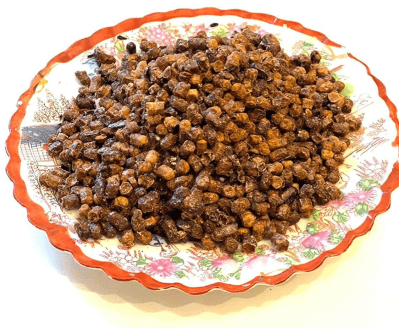
picture source Amazon
So, maybe bee bread is not the superhero to kill a MRSA infection, but it may greatly contribute to it. It has a slightly sour taste, not bad at all, so take my advice and include it in your diet. Into a smoothie, a salad, or yogurt.
See what happens. Bee bread has many other secret powers, not only its antimicrobial one. Check for yourself. You can find some on Amazon. And read more on bee bread composition.

